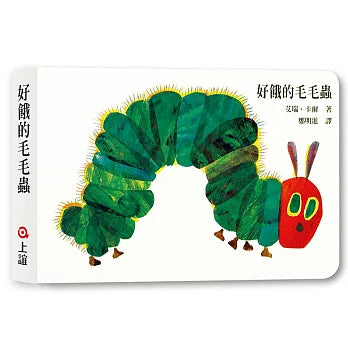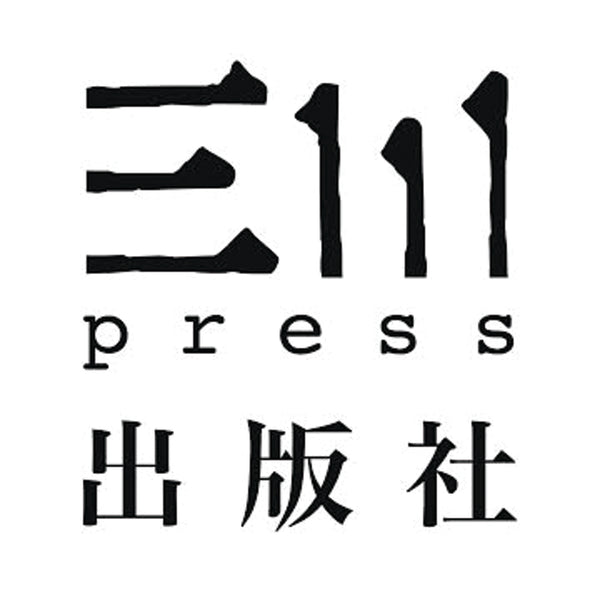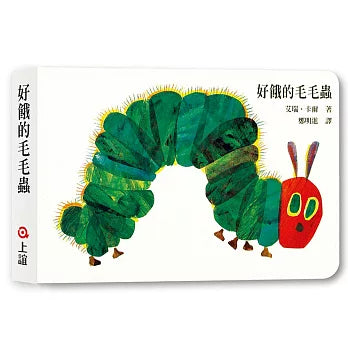The Very Hungry Caterpillar (Hardcover)
The Very Hungry Caterpillar (Hardcover)
In stock
Couldn't load pickup availability
译者: Zheng Mingjin
出版社: 上谊文化公司
ISBN/EAN: 9789577620989
出版日期: 1997-11-01
页数: 24页
语言: Traditional Chinese
Baby's first classic picture book!
The caterpillar is very busy, crawling in and out.
One hole, two holes, three holes...
Eat one bite after another, eat and eat non-stop,
It’s so fat, when will it be full?
This caterpillar, created by Eric Carle, arches its round and fat body and crawls unimpeded from the United States to more than 70 countries and regions around the world.
With over 55 million fans, this classic hole book is many babies' first picture book, with fun holes that allow little fingers to slide in and out.
Eric Carle's unique collage technique elevates colors beyond mere vibrant hues, allowing children to appreciate the multifaceted beauty of nature. For example, the green of a caterpillar is far more vibrant than the single, typical green. Furthermore, Eric Carle excels at expressing admiration for life through a rich tapestry of childlike playfulness. As the caterpillar continues to eat and metamorphose into a beautiful butterfly, the preciousness of life is truly a joy to behold. As Peng Yi, author of "Meeting a Century of Picture Book Classics," puts it, "This is a picture book brimming with poetry and creativity. Speaking of poetry, look at the green leaves, the earth, the butterflies, the multicolored fruits, the radiant moon, the blazing sun... The author, like a passionate poet, uses unrestrained, intense, and vibrant colors to sing a hymn to life for children."
In this joyful coming-of-age story, babies can imagine themselves as caterpillars interacting with the book. While learning about the caterpillar's transformation into a butterfly, they can also learn concepts such as the week, counting, and sorting.
※Why does the butterfly in “The Very Hungry Caterpillar” turn into a cocoon instead of a pupa?
Grandpa Eric Carle replied:
That’s a really good question.
Scientists explain that in most cases, butterflies will transform into pupae, but not all. There is a very rare butterfly species - Parnassian
It spins a cocoon. These butterflies live in the Pacific Northwest and Siberia.
My own unscientific explanation is that my caterpillar is very special. Because caterpillars as you know don't eat candy or ice cream, and you won't be able to find my caterpillar in any illustrated book.
And when I was a little boy, my dad would say to me, "Eri, come out of your cocoon."
He meant that I should open my mind and take in the world around me. So, I thought the phrase "coming out of your chrysalis" was a bit strange. So, poetry beats science!
This book is so captivating . Children can learn to overcome challenges alongside the caterpillar. They can learn to count from nature. Through reading, children can learn the concept of the week. This readable toy book, with its playful holes, is a delight for children. The collage's colors are unparalleled, and the caterpillar's transformation into a butterfly is a delightful experience.
Eric Carle
His works can be read and played, building a bridge of communication between school and family.
Did you know he has a big beard and a paintbrush? He is full of childlike innocence and has been writing children's literature for more than 40 years.
Using the magical magic of collage, he creates unique colors in the world. With his rich imagination and childish words, he enters the fantasy world of children and has created more than 70 interesting, beautiful and imaginative works. Among them, "The Very Hungry Caterpillar" has been translated into more than 50 languages and has been read by more than 33 million children around the world.
Although he is over 80 years old, his creative spirit has never stopped. His personal art museum, the Eric Carle Picture Book Museum, is the first picture book museum in the United States.
Eric Carle was born in the United States on June 25, 1929. In 1967, renowned educator and author Bill Martin Jr., captivated by his drawings of red lobsters, invited him to illustrate a story he had written. This became the famous Brown Bear, Brown Bear, What Do You See? (1967), Carle's first children's book. The free-flowing thrill of the creative process rediscovered his joy in drawing. At the age of 39, he independently completed 1 , 2, 3 To The Zoo (1968), which won the Grand Prix at the Bologna International Children's Book Illustration Exhibition. At the age of 40, he created the universally recognized The Very Hungry Caterpillar.
He said something very well: "I try to use my books to build a bridge between school and family. In my books, I try to guide children with an optimistic attitude. I believe that children are naturally creative and eager to learn. I want to show them that learning is actually a fascinating and joyful thing." Because of this, he receives letters from children all over the world every year, asking him all kinds of questions or sending him their own works...
Eric Carle's picture book: The Very Hungry Caterpillar (Hardcover)
Brown bear, brown bear, what are you looking at?
A busy spider. A lonely firefly. Moving from head to toe. Have you seen my cat?
Do kangaroos have mothers?
A mysterious birthday gift. The lamb and the butterfly. The little seed. Mr. Seahorse. Ten rubber ducks. Where are you going? To see my friends!
Draw me a star. The Slow, Slow, Slow Sloth. The Very Hungry Caterpillar 3D Hole Book. Eric Carle's Creative Fairy Treasure Box (The Very Hungry Caterpillar / Daddy, I Want the Moon / The Quiet Cricket / The Piecemeal Chameleon / The Visible Song)
I can read English game boxes (The Very Hungry Caterpillar / Brown Bear, Brown Bear, What Are You Looking At? / Can You See My Cat? / Move From Head to Toe / Does Kangaroo Have a Mother?)
Share


